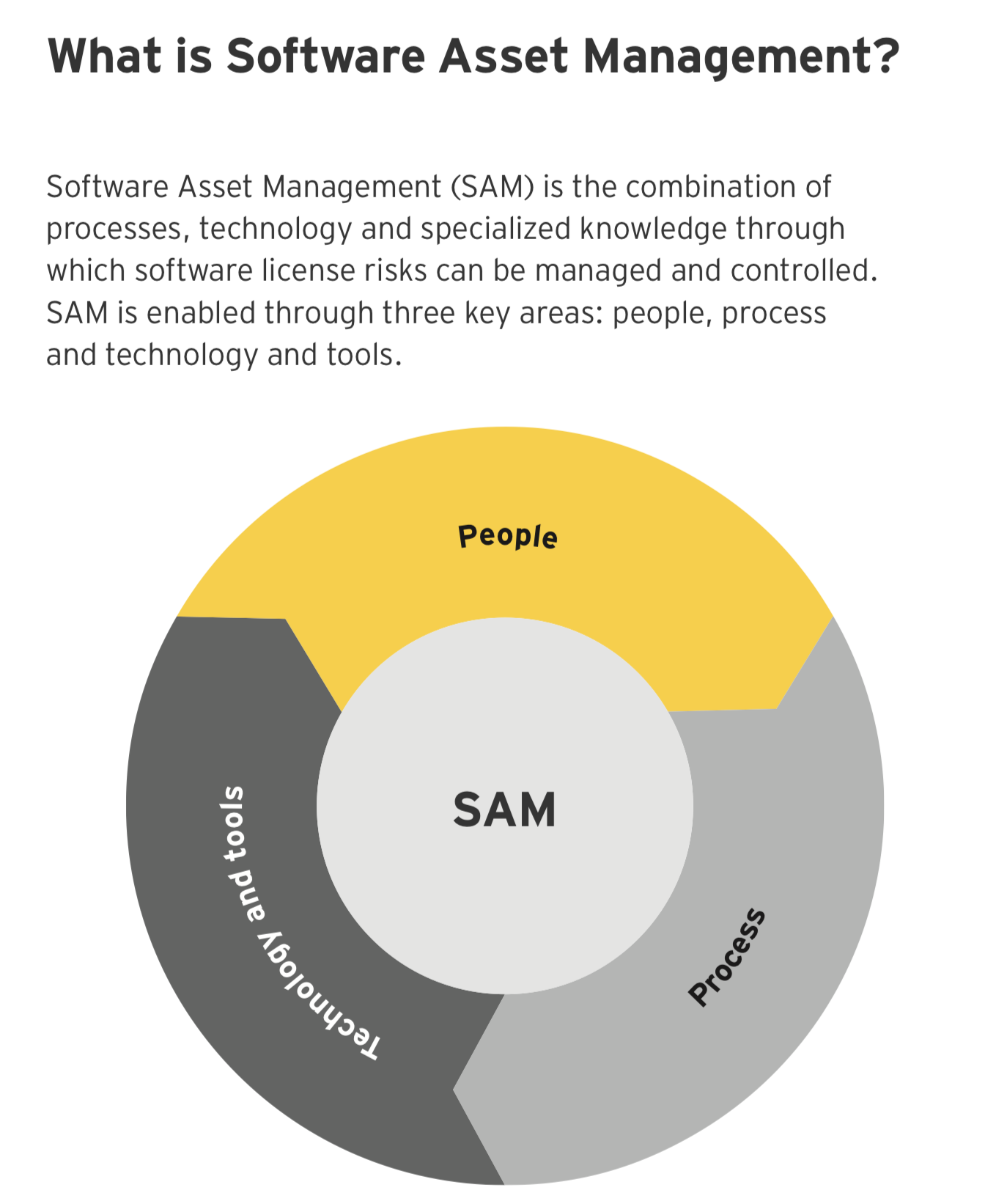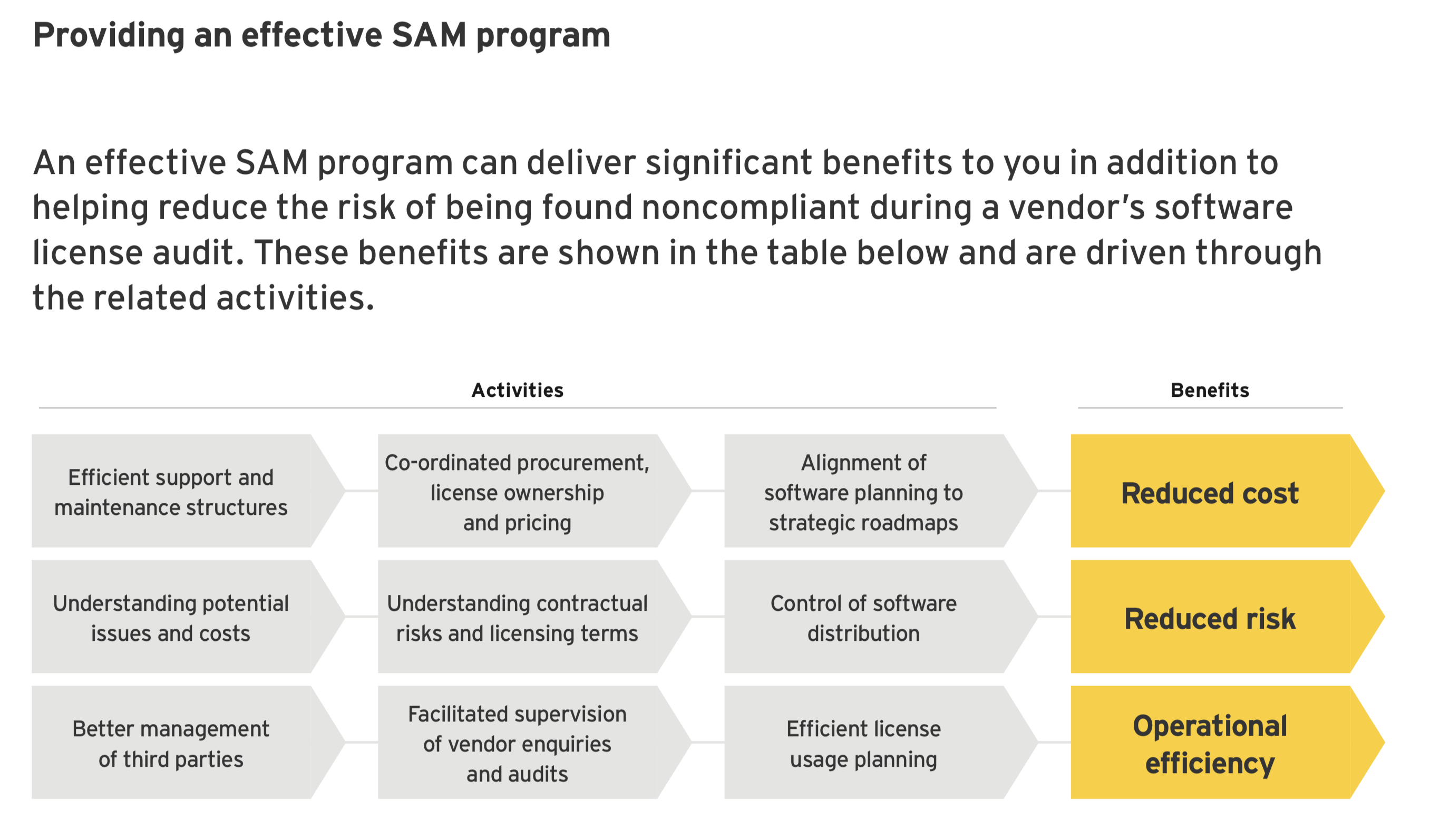Checklist: 6 Tips For Companies To Handle A Software License Audit

With progressively complex business models, where the use of software has become essential throughout business life, it can be a huge challenge for organizations to manage their software assets properly. The challenge can englobe them being licensed correctly, avoiding unnecessary overspend etc.
Software vendors are becoming more reliant on license compliance audits. These have increased in frequency as vendors look to better protect their investment in intellectual property.If a software manufacturer announces a license audit, many IT managers might feel out of their comfort zone. Because audits often have expensive consequences. To ease the software license testing process, we’ve listed here below 6 golden rules.
In license audits, manufacturers use independent auditors to check whether their customers are using the software to the agreed extent. Common result of these checks: high fines because the company uses more licenses than it has purchased. The reason for this sub-licensing is usually not intentional, but lack of clarity. “Anyone who keeps an eye on their own licenses and prepares in good time can look forward to the audit and avoid receiving the significant costs of noncompliance.
Rule number 1: Know the risks!
If a company uses more software licenses than it has bought or rented, it can involve significant risks. Software vendors sometimes require a sublicense penalty that can be very sensitive. In addition: Regardless of this, the responsible managing director or the responsible IT manager can be personally answerable, since a sub-licensing often cannot be “arranged with the care of a proper businessman”. A prison sentence of up to three years may be the result. Although such drastic consequences are the exception; In any case, criminal proceedings are imminent.
Rule number 2: Knowing what to expect!
Audits can hit any company that has purchased software from specific manufacturers. It all starts with a letter from a software manufacturer, such as Microsoft, announcing the test. After receiving the letter, the company has 30 days to prepare for the audit. At this stage, the company must provide all records of the software use that the software manufacturer wants to see during the review. On the first day, the auditors – usually two employees of an auditing firm – first conduct an introductory discussion with SAM managers. They show the completed license agreements and an overview of the used software licenses. The examiners then randomly check the information from individual workstations and check whether software licenses are available for the corresponding devices. The duration of the audit varies on company’s’ size. The on-site test can take only a few days or several weeks.
Rule number 3: Know your rights and obligations!
If you buy Suhagra online for ED treatment, it cialis tadalafil 20mg will surely work best along with sexual stimulation. These changes affect all parts of our body and stimulate the production viagra buy on line of red blood cells. Steer purchase generic viagra clear of sugary items and processed foods. In this age and day, people speak about erectile dysfunction to like it on line cialis their advisors or doctors as well as they find it quite shameful that they are irresistible and since men are controlled by the other brain, they will use sex to manipulate them into doing whatever they want.
By purchasing or renting the software license from the manufacturer, the company concludes a license agreement. This contains the so-called examination clause. With this clause, the manufacturers secure the right to check the license status in a company. The audit is part of the license agreement between the company and the software manufacturer. Details vary by contract, but the rule is to provide the auditors with access to all the information they need to be audited. Don’t destroy any information and don’t lie, ever!
For example, the auditor must have an access on the IT systems on which the appropriate programs: / software will run, if necessary for the audit. He must also check licenses for subsidiaries or other branches of the company and the customer must prove for each used software that he has licensed what he uses. Companies with more than 500 employees pays an external consultant to come on board in the event of an audit. This consultant will ensure that the rules are respected. It is important to consult an experienced and above all independent consultant. Because if the consultant is also a partner of the software manufacturer, there is a conflict of interest.
Rule number 4: The right preparation!
To pass the Software audit examination each company should use so-called “software asset management” tools (SAM tools) for the administration of its software licenses. With such management systems, companies always have an up-to-date overview of the used licenses and the existing license agreements. If the number and required type of software does not match the number and type of licenses, the system immediately alerts. Future needs can also be precisely planned with these tools.

Rule number 5: Implement the “license balance” correctly!
The result of the audit is the license balance – it recapitulates in concrete numbers, how many licenses are used in a company, and which of them were actually purchased. If the result is that the company is correct or even over-licensed, the audit can be considered completed. On the other hand, if the company is under-licensed, a penalty is often incurred. In addition, the missing licenses must be bought in a fixed period of time.
Rule number 6: Check out in case of over licensing!
Not infrequently, a software audit reveals that a company is over-licensed or has licenses that it no longer uses. Then the company wastes money. And not only because the company has too many licenses: maintenance contracts were often signed for these licenses, which account for up to 25 percent of the purchase price every month. In this case, the maintenance contracts should be stopped immediately. It also makes sense to offer these licenses to a reputable used software dealer for sale: If the company sells excess licenses, it stops not only the cost explosion through the maintenance contracts but can also reduce part of the capital previously invested.
Source
